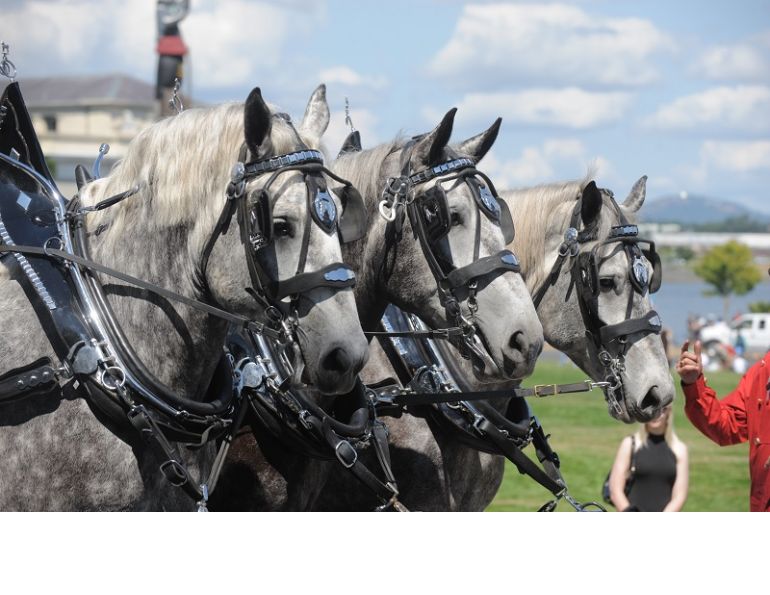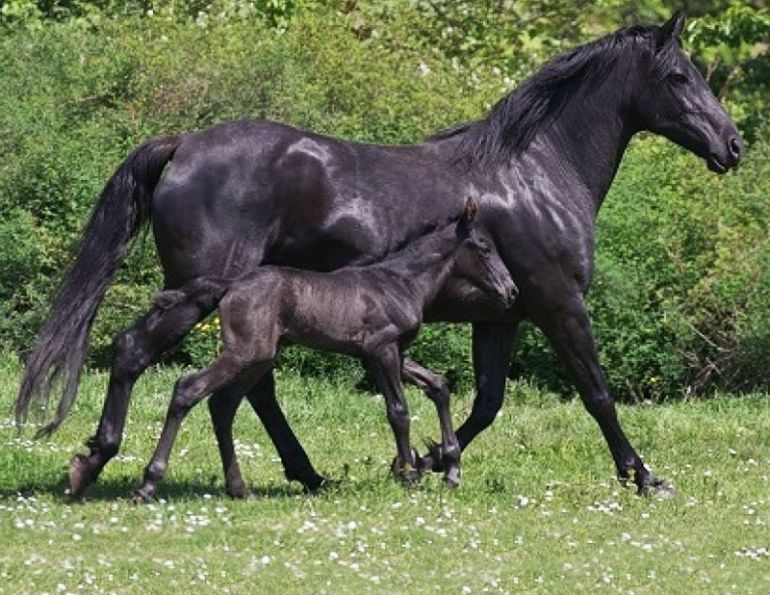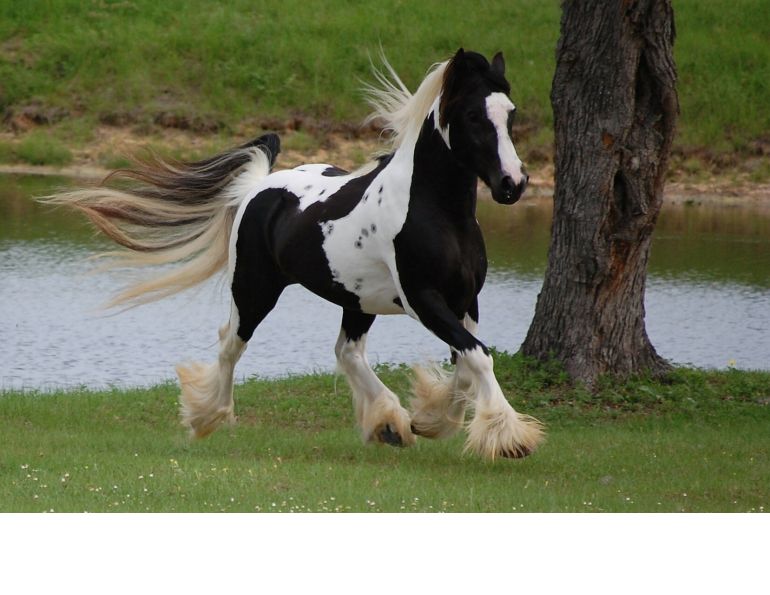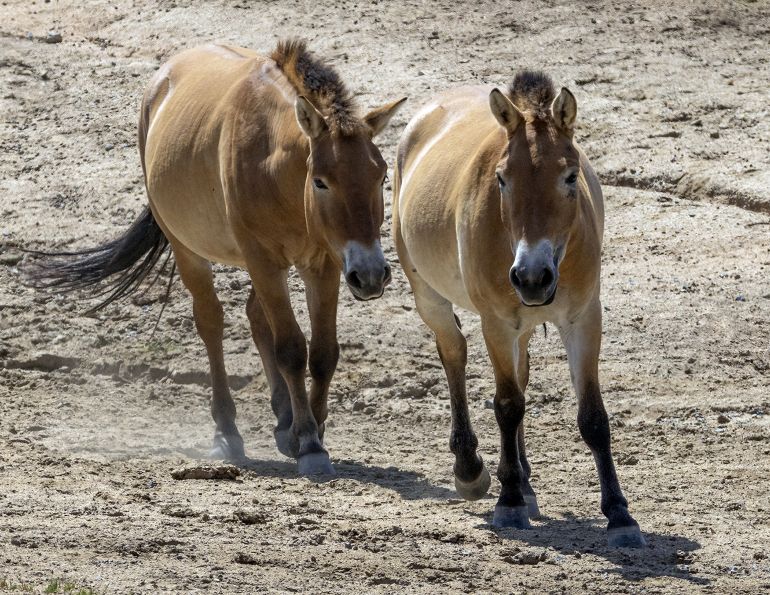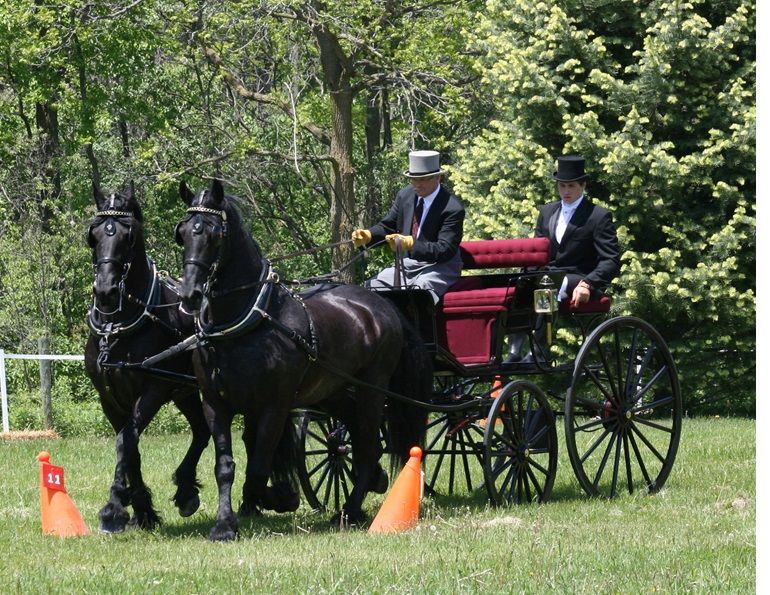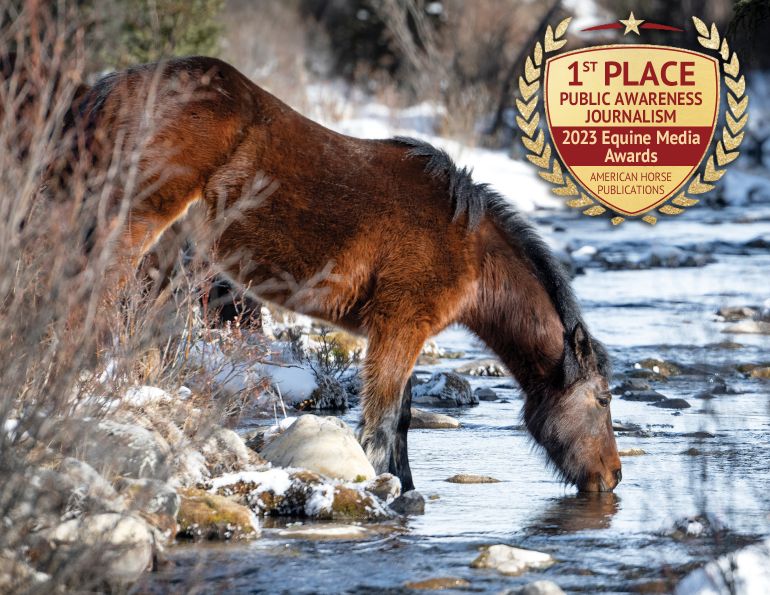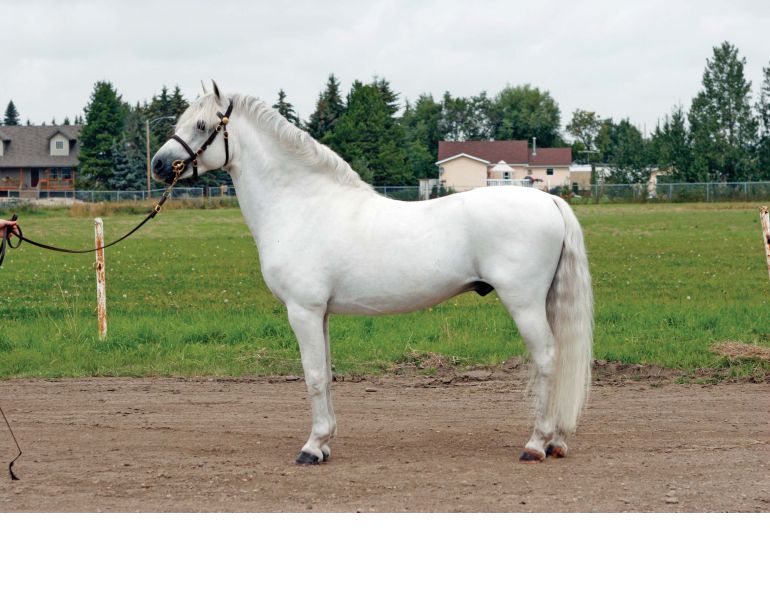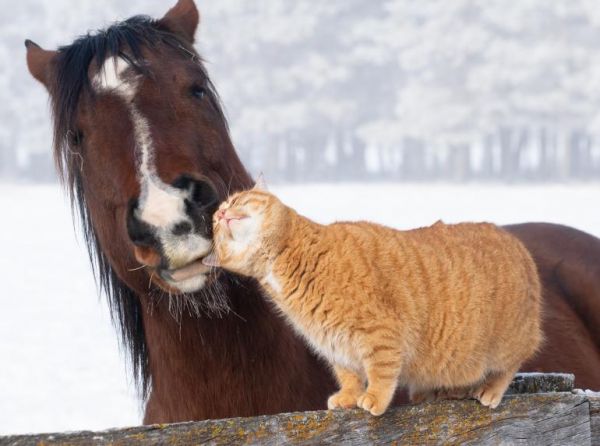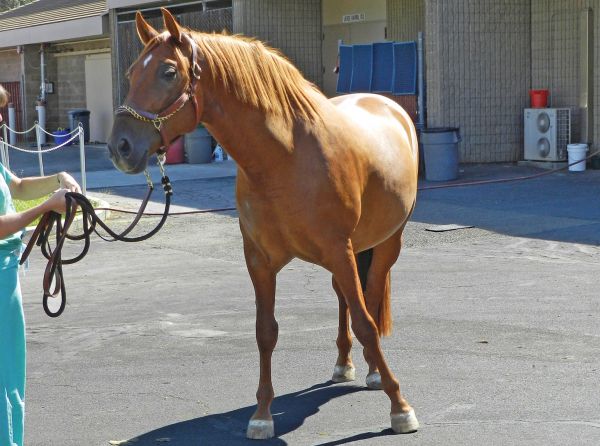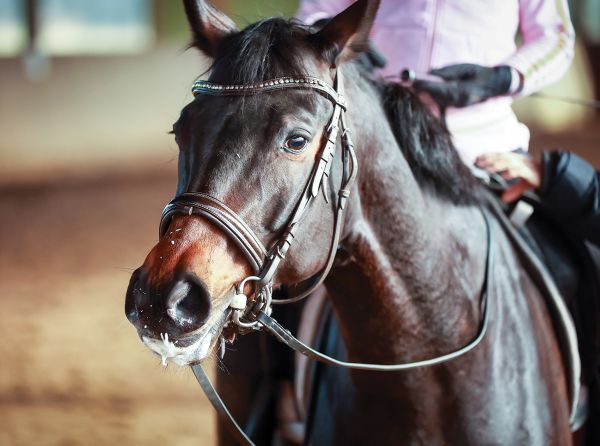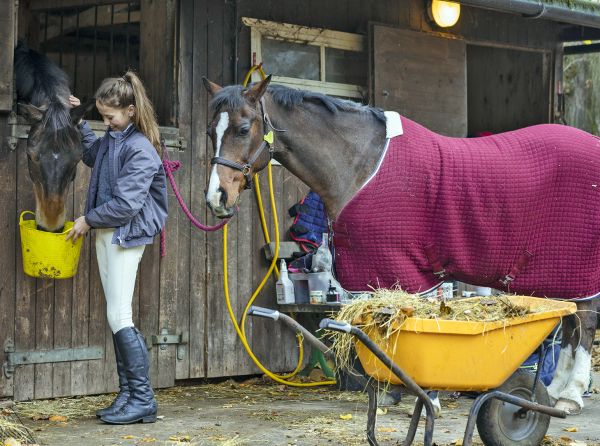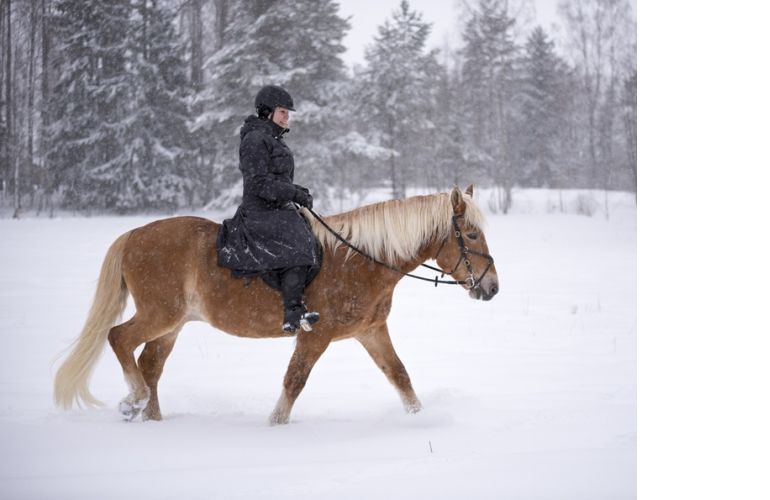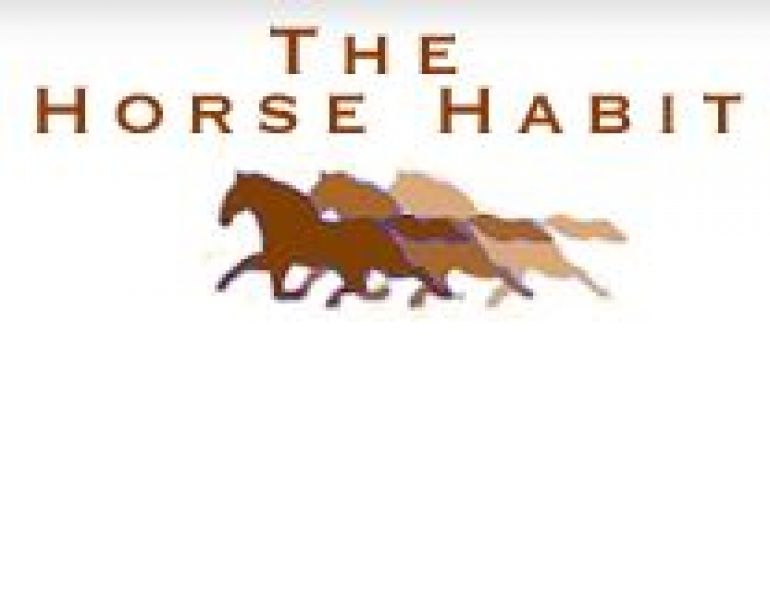By Margaret Evans
For millennia, the vibrancy and diversity of the coat colours and patterns of multi-hued horses have held a powerful fascination for humans around the world.
A 25,000-year-old Paleolithic painting on the wall of the Pech Merle cave in southern France depicts two horses, their white coats dappled with black spots. The tomb of a wealthy Egyptian land steward dating back to circa 1400 B.C. features the image of a sorrel and white two-toned steed pulling a chariot. References to “painted” or spotted horses are part of the oral histories of the Gobi desert tribes that Genghis Khan recruited during his conquests in the late 12th and early 13th centuries.
This fascination with horses with variegated coats continues today, as evidenced greatly by the widespread popularity of the American Paint Horse, whose identity is closely tied to its colourful coat patterns.
The first known record of spotted horses in the New World comes from the historian Bernal Diaz del Castillo, who in 1519 sailed with the Spanish conquistador Hernando Cort es to Mexico. According to Diaz, two of the sixteen horses that traveled with the expedition had variegated coats – a “pinto” with “white stockings on his forefeet,” and a “dark roan horse” with “white patches.”
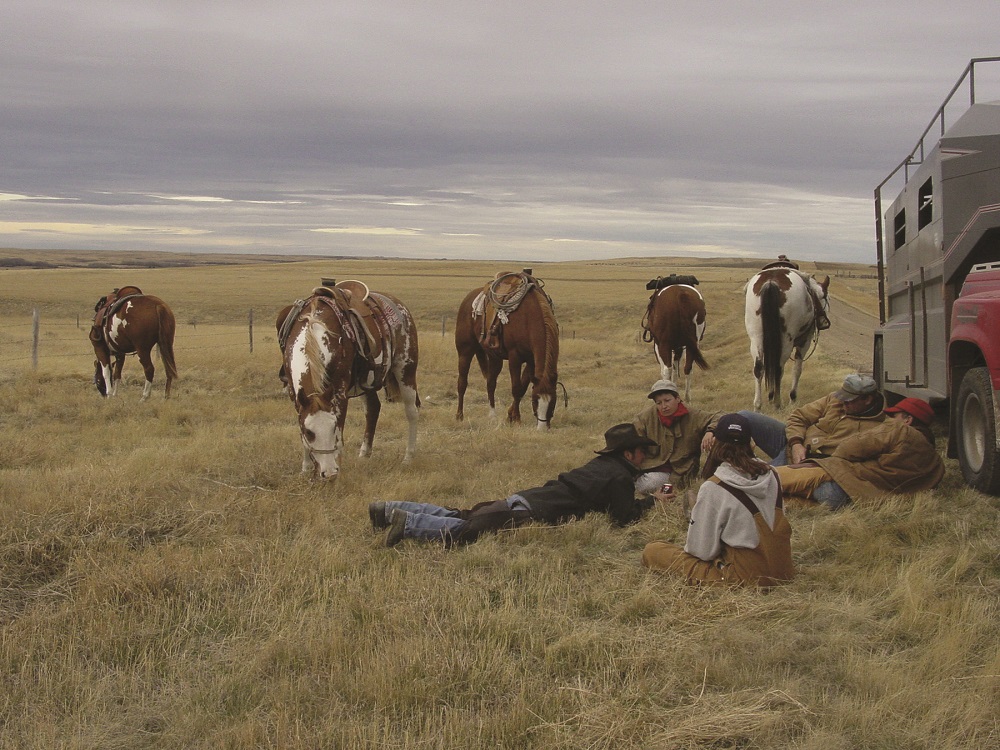
The origins of the Paint are as a working or stock horse, a tradition which continues today on cattle ranches across Canada and the U.S. Photo courtesy of Connie Delorme, Delorme Livestock
These horses, and those from subsequent expeditions to the New World, seeded the population of wild mustangs that eventually spread across the plains of the American West. They multiplied into the thousands and an abundance of them bore spotted coats. The beautifully coloured horses attracted the attention and admiration of the Native Americans, who began to use horses for hunting, transportation, and warfare, revolutionizing their own cultural landscape in the process.
As the West was settled and cattle ranches sprawled across the land, these spotted horses became the preferred mounts of many cowboys on account of their flashy colouring, hardy adaptability, and good-natured dependability.
But by the early 20th century, as civilization spread, horses began to fade from the landscape. A move was afoot to start preserving the unique distinction of individual breeds.
At this time, Paint Horses were generally considered to be Quarter Horses with colour. But when the American Quarter Horse Association (AQHA) emerged in 1940, it excluded horses with “excessive white” (i.e. Paints) from its new registry.

Like the Quarter Horse, the stock-type Paint balances a broad chest with powerful hindquarters and good overall muscling. Photo: Brandi Thiessen, Merikle Waters Paints & Quarters
In the early 1960s, Rebecca Lockhart (then living in Gainesville, Texas) and some of her close friends were determined to stand up to the shifting opinion of the horse establishment that the Paint breed was inferior because of its colourful patterns. So, in 1962, Lockhart founded the American Paint Stock Horse Association (APSHA) with the intention of preserving both the colour and the stock-type conformation of the Paint Horse. She registered the first Paint Horse - Bandits Pinto, owned by Flying M Ranch of McKinney, Texas - at her kitchen table.
Another organization, also in Texas – the American Paint Quarter Horse Association (APQHA) – had been founded in 1961 with the similar aim of promoting the Paint as an ideal, all-around Western horse. In 1965, the APSHA and the APQHA merged to form the American Paint Horse Association (APHA).
At the time of its founding, the APHA had 1300 members and 3800 registered horses. At present, the organization has registered more than one million horses in 59 nations and territories, serves over 64,000 active youth and adult members worldwide, and recognizes 111 regional and international clubs. Additionally, the APHA organizes championship shows, sponsors trail rides and other events, and continues to promote programs that celebrate the Paint horse.
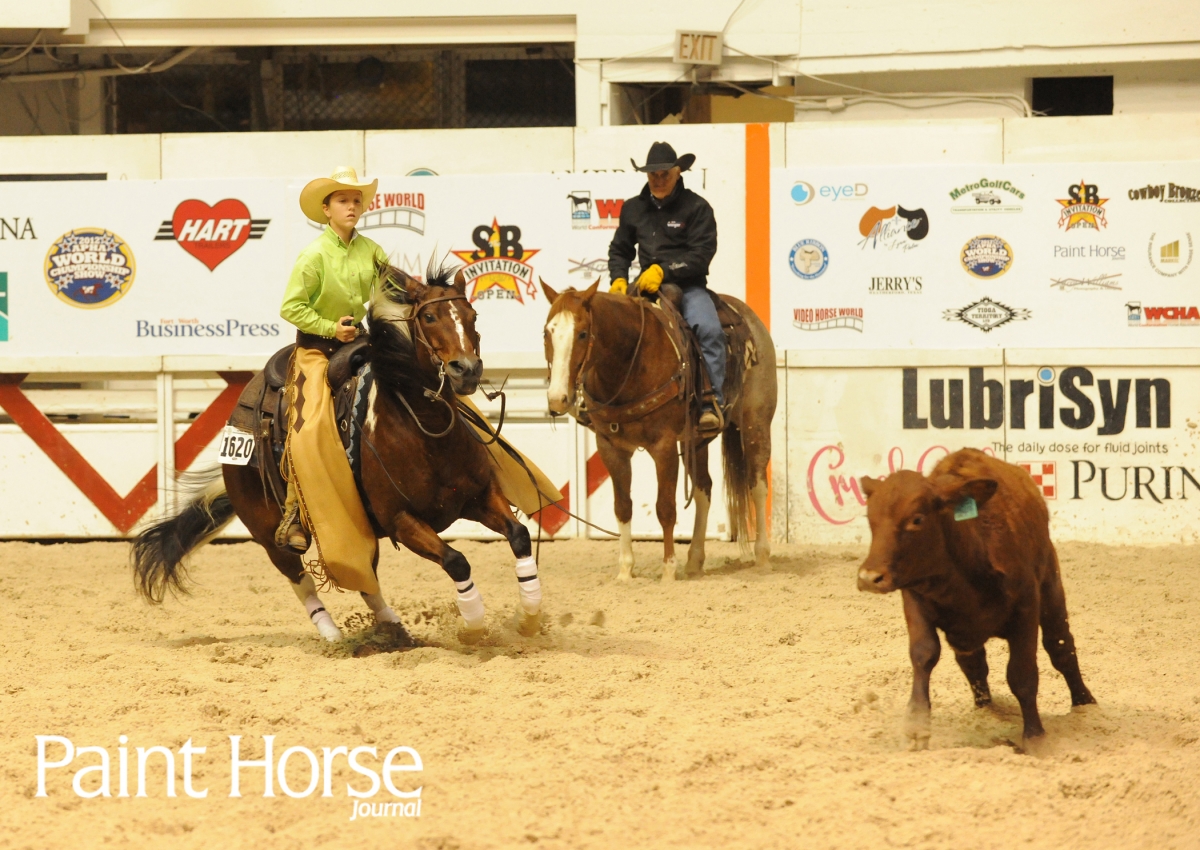
Traditionally, the Paint Horse excels in the Western disciplines, including cutting, reining, halter, and Western pleasure. Photo courtesy of the American Paint Horse Association
While the colourful coat pattern of the typical American Paint Horse is undoubtedly the breed’s most distinctive characteristic, conformation and pedigree are equally important. To be eligible for registry with the APHA, the horse should be representative of the ideal stock-horse body type, and must be bred to strict bloodline requirements – those being a sire and dam that are registered with the APHA (Paint), the AQHA (Quarter Horse), or the Jockey Club (Thoroughbred). To be eligible for the APHA Regular Registry, the horse must also “exhibit a minimum amount of white hair over unpigmented (pink) skin.”
A solid coloured offspring of two APHA registered parents is eligible for registration as a solid Paint-Bred (formerly called “Breeding Stock”), which carries certain restrictions. Depending on their genetic profiles, a solid Paint-Bred, when crossed with an APHA-registered horse, may produce a patterned foal.
A more modern, “sport horse type” of Paint is becoming quite popular with riders in the English disciplines. Photo courtesy of Kelly Allen
If the Paint Horse’s colouring is appealing, so is its conformation.
“We value how they are put together physically and mentally the most,” said Connie Delorme, who, with husband Don Delorme, owns and operates a cattle ranch and Paint Horse breeding program in Robsart, Saskatchewan. The Delorme’s breeding focus is to produce horses with the characteristics desirable for a working ranch horse. “We favour balance, bigger bone, and foot to remain structurally sound, complemented by a pleasing disposition. This combination tends to create a pleasing partnership with an improved response to training and everyone’s different riding style and skill.”
But while the traditional stock-horse type Paint resembles the Quarter Horse, with a broad chest, powerful hindquarters, good muscle, and an average height of 14.2 to 16 hands high, other “types” of Paint Horses have emerged.
The typical Paint Horse has a kind, gentle, and amiable nature. Photo courtesy of Pixie Joe Bonanza
“Over the years, different bloodlines have specialized to excel in specific disciplines like Western pleasure, English, cutting, reining, racing, and, of course, ranching,” explained APHA Representative Irene Stamatelakys. “Breeders strive to produce a horse that has the build, athletic ability, and temperament to succeed in their specialty whether it’s the body-building world of halter horses, the ‘greyhound’ sprinters in racing and barrel racing, the catty cutting horses full of cow sense, or the tall and elegant English horses with a natural talent for jumping.”
“Depending on their type, they can excel in anything from ranch work, cutting, reining, gymkhana, Western pleasure, barrel racing, and halter to the ‘sport horse’ type that is seen in hunter, English, dressage, and jumping,” said Sonja Avramenko of Karma Ridge Stables in Thorsby, Alberta. “I have also found them to be superior family and recreational mounts as well.”
Kelly Allen of Langley, BC, and husband Ron Stolp agree.
One of the Paint Horse’s most appealing characteristics is its versatility. This APHA stallion, The Huntsman, owned by Kelly Allen and Ron Stolp, is equally at home performing over fences and on the trail. Photos courtesy of Kelly Allen
Just ask Angie Morrow, of Maple Creek, Saskatchewan, who has twice competed in the APHA World Championship Show – in 2010 and 2012 – with her 2007 APHA mare, Assets and Emeralds (a.k.a. Katie). “Our main activity is a good safe ride down the road or on a trail,” said Allen. “We spend most of our winters in Arizona riding our horses on different trails. In the summer months we love to do hunter/jumper shows. We have also done some cattle penning. And we have even helped ranchers move hundreds of cattle to upper pastures on our horses. My [Paint] stallion has also done Grand Entry drill and last year opened the Cloverdale Rodeo carrying the Canadian flag. It is great to have horses you can just jump on and try almost anything.”
It is this extreme versatility that allows Paint Horses to stand out from the crowd. As an added bonus, their exceptionally pleasing personalities and temperaments make them a delight to train. All breeders select for disposition and trainability, and the Paints give back in spades. Paints are typically gentle, kind, easy to start, and quick to learn.
“I saw pictures of her when she was just an hour old and I said, ‘that’s my horse’,” said Morrow. “I can’t describe the connection I felt through the picture.”
Morrow purchased Katie as a weanling, and the pair have been cleaning up in the show ring ever since. In 2010, Katie helped Morrow realize her dream of competing at the APHA World Championship Show. Their performance landed them in the finals, and they finished in 16th place overall in the Novice Amateur Western Pleasure division.
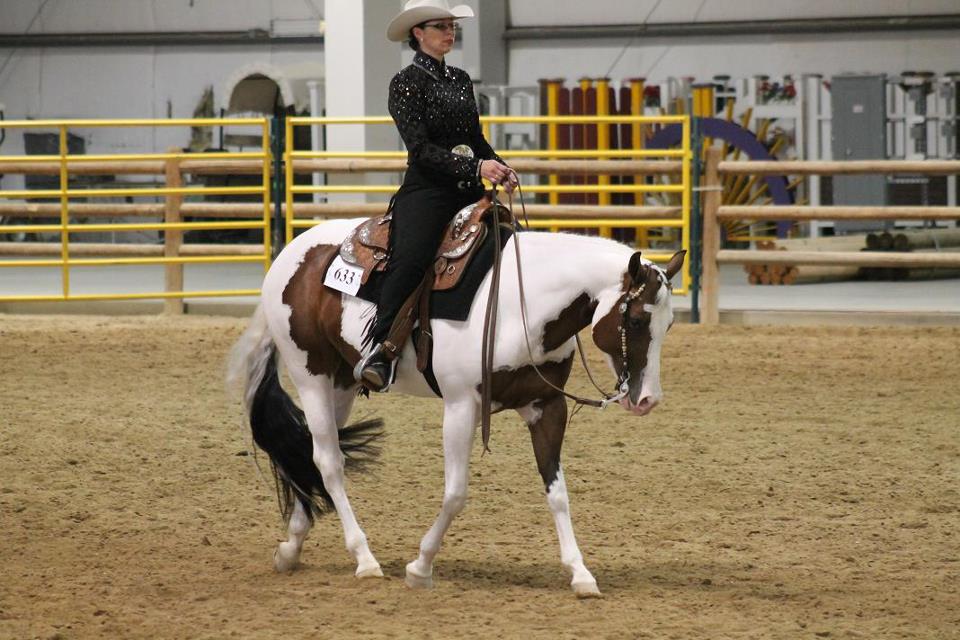
Angie Morrow, of Maple Creek, Saskatchewan, has competed in the APHA World Championship Show with her Paint mare Assets and Emeralds (a.k.a. Katie) twice – in 2010 and 2012. Photo courtesy of Angie Morrow
“She was three. She was definitely the youngest horse in our Novice Amateur classes and she just tried her little heart out,” said Morrow. “I walked away a very happy owner. She’s my dream horse, through and through.”
Two years later, Morrow and Katie returned to the 2012 APHA World Show, where they not only made the finals in Novice Amateur Showmanship, but also finished in the Top 5 in Novice Amateur Trail and Novice Amateur Hunt Seat Equitation.
One of the things that really stood out for Morrow at both her APHA World Show experiences was the welcoming, supportive atmosphere created by show organizers and competitors.
“The people there are just amazing,” Morrow said. “They’re so friendly. Even though we were competing against each other, they all root for each other.”
And that attitude is not limited to APHA members south of the border.
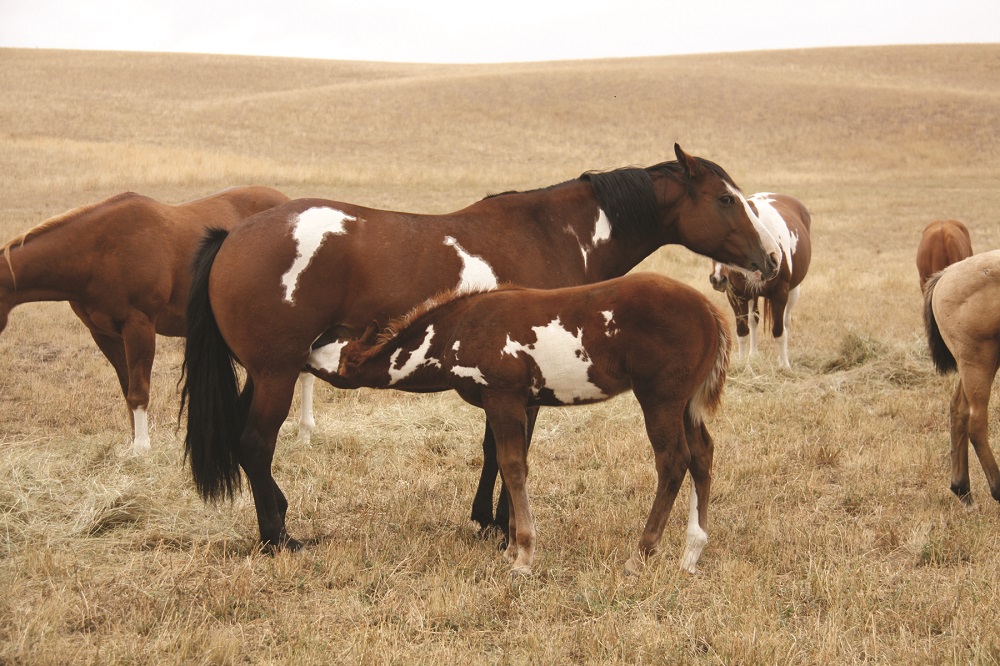
Eligibility for registration with the APHA is dependent upon strict bloodline requirements – those being a sire and dam that are registered with the APHA (Paint), the AQHA (Quarter Horse), or the Jockey Club (Thoroughbred). Photo courtesy of Connie Delorme, Delorme Livestock
“I can’t express how much, just within the Paint clubs and shows up here in Canada, new members are welcomed,” said Morrow. Everybody is willing to help give them tips and advice, help them learn about the classes and the breed.”
The APHA is committed to fostering a sense of community amongst its members as well as promoting the Paint breed. In keeping with these goals, and to encourage owners to enjoy their Paint Horses in a variety of activities, the APHA offers the Ride America program in which members log hours spent riding or driving recreationally and win prizes. This program is also available to Canadian members, and last year Allen and Stolp logged over 1000 hours in the saddle. The initiative has proven to be very popular, not the least because it allows Paint Horse enthusiasts to come together and share their love of the breed and its versatility.
“Paints are a truly versatile breed,” said Laura Martin, President of the Saskatchewan Paint Horse Club who has been breeding Paints for 25 years out of her Painted River Ranch in Edam, Saskatchewan. “They are seen in every equine event. Their talents seem to be only limited by the ability of those that own, train, and show them.”
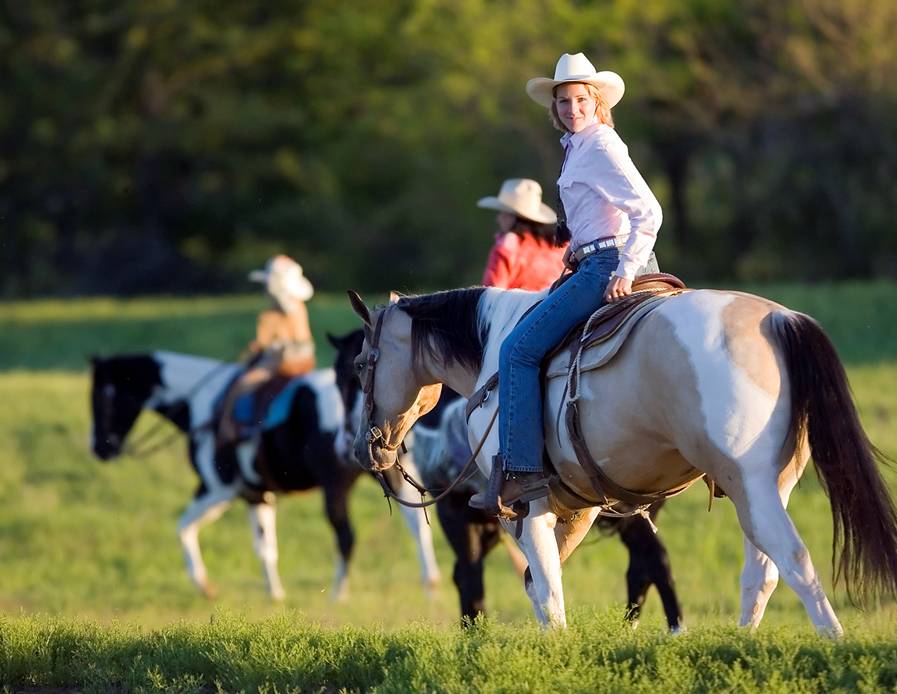
The APHA’s Ride America Program encourages recreational riding/driving and builds a sense of community among Paint owners and enthusiasts, while promoting the Paint Horse breed. Photo courtesy of the American Paint Horse Association
As an example, Martin cites her first Paint colt who was born with tendon issues. He had surgery as a yearling but was given a poor prognosis as a future riding horse and was eventually sold as a companion horse to a neighbour. “Smokey” changed hands a few times and was eventually bought by a couple who knew nothing of his past. They trained him in team roping, barrel racing, and bending. In 2005 he was the APHA World Champion bending horse and went on to win many other championships as a speed horse.
“Smokey currently holds the record of Canadian-Bred Paint Horse with the most world and reserve champion titles to his credit,” said Martin. “Smokey proved to us the amount of talent, perseverance, and heart a Paint horse can have if they’re given the chance. A Paint horse can be whatever you want them to be. That’s the beauty of the breed.”
This seems to be a universal feeling amongst Paint Horse owners.
“All my horses are quite versatile,” said Morrow. “Even though I have them directed at showing, I still like to take them for trail rides and try new things with them. I haven’t had one complain yet. They’ve always been willing to try something new and go out there full force. That’s what I like about the breed. You’re not limited to any one thing.”
Paint Colours & Patterns
Broadly speaking, the Paint Horse’s distinctive appearance is created by unique areas of white hair over unpigmented skin combined with any of the colours you might find on a horse of any other breed.
The Paint Horse comes in a wide range of colours originating from the base colours found in other breeds, which include black, brown, bay, and red (chestnut, sorrel). These base colours, when combined with a modifier or dilution gene (e.g. cream, dun, champagne, or roan), create a variety of other colours. For example, the cream gene is responsible for the cremello, perlino, smoky cream, palomino, bucksin, and smoky black colours.
The white markings that create such dramatic visual impact are categorized by the APHA into three types of pattern: tobiano, overo, and tovero.
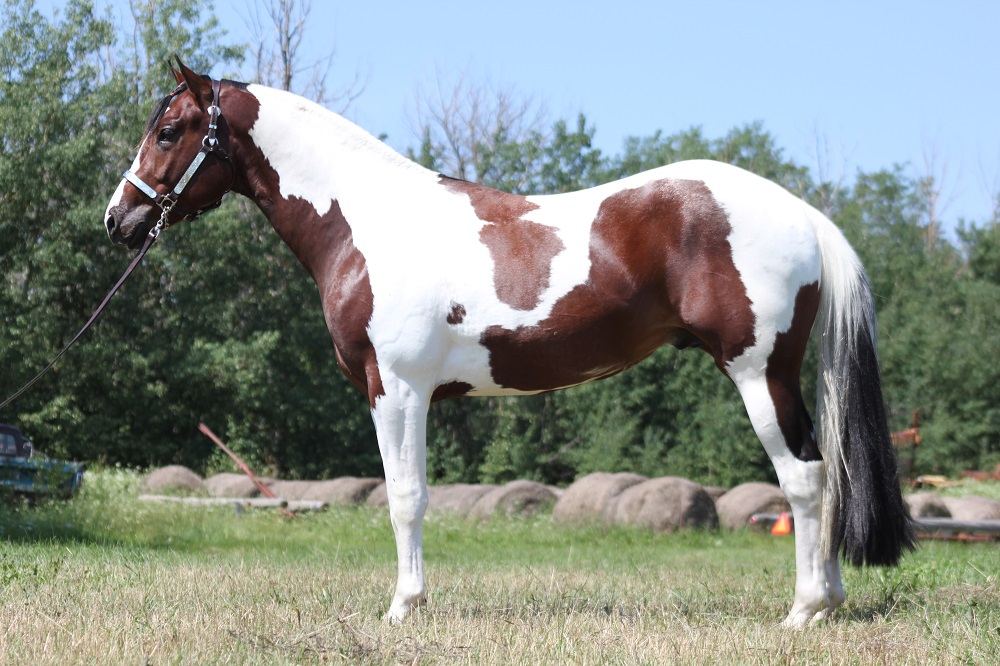
Tobiano - The tobiano has a solid coloured head (sometimes with classic facial markings such as a blaze, star, strip, or snip), predominantly white legs, a two-toned tail, dark colour covering one or both flanks, and white markings across the topline. Tobianos also typically have ink spots – small spots of colour one to three inches across surrounded by a “blue zone” (white hair on black-pigmented skin) – and ermine, or coronet, spots. Photo: Brandi Thiessen, Merikle Waters Paints & Quarters
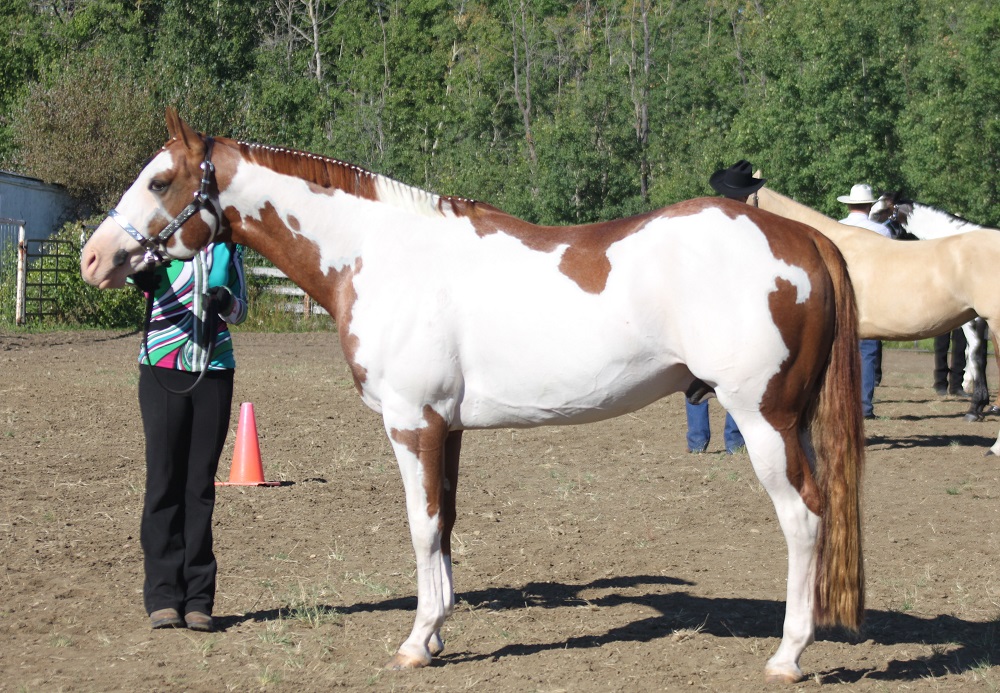
Frame Overo – The frame overo generally has dark legs, a head extensively marked with white, white spots usually occurring horizontally on the middle of the sides of the body and neck which rarely cross the topline, and blue eyes are quite common. Photo: Brandi Thiessen, Merikle Waters Paints & Quarters
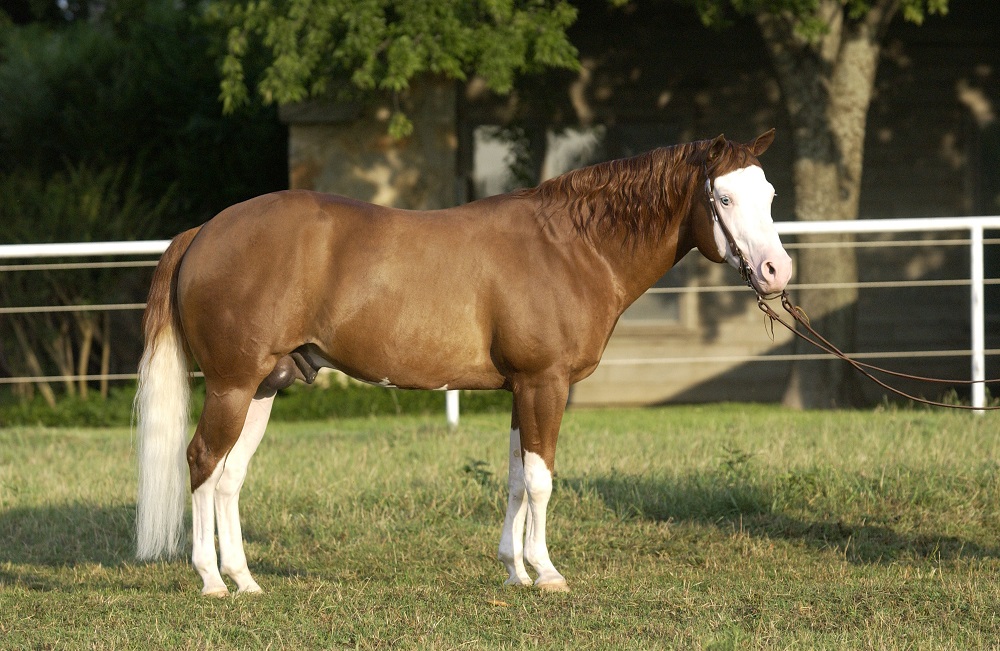
Splashed White Overo – The splashed white overo typically has white legs, white markings on the belly, a head that is extensively if not completely white, and blue eyes. Photo: Magoteaux
Sabino Overo – The sabino overo usually has extensive white on the legs and face, body spots on the belly, and roan or speckled areas, and narrow extensions of white up a leg or down the throat are typical. Sabino overos also commonly have partially blue eyes. Photo: Brandi Thiessen, Merikle Waters Paints & Quarters

Tovero – The tovero is a combination of tobiano and overo, and usually has more white than coloured area, with varying sized spots or marks on the chest and flank, dark pigments on the ears and mouth, spots at the base of the tail, and one or two blue eyes. Photo: Trisha Davis, Scotter Lake Paints
Main photo: The American Paint Horse's most identifiable feature is undoubtedly its vibrant colouring and unique coat pattern. Credit: Robin Duncan Photography







